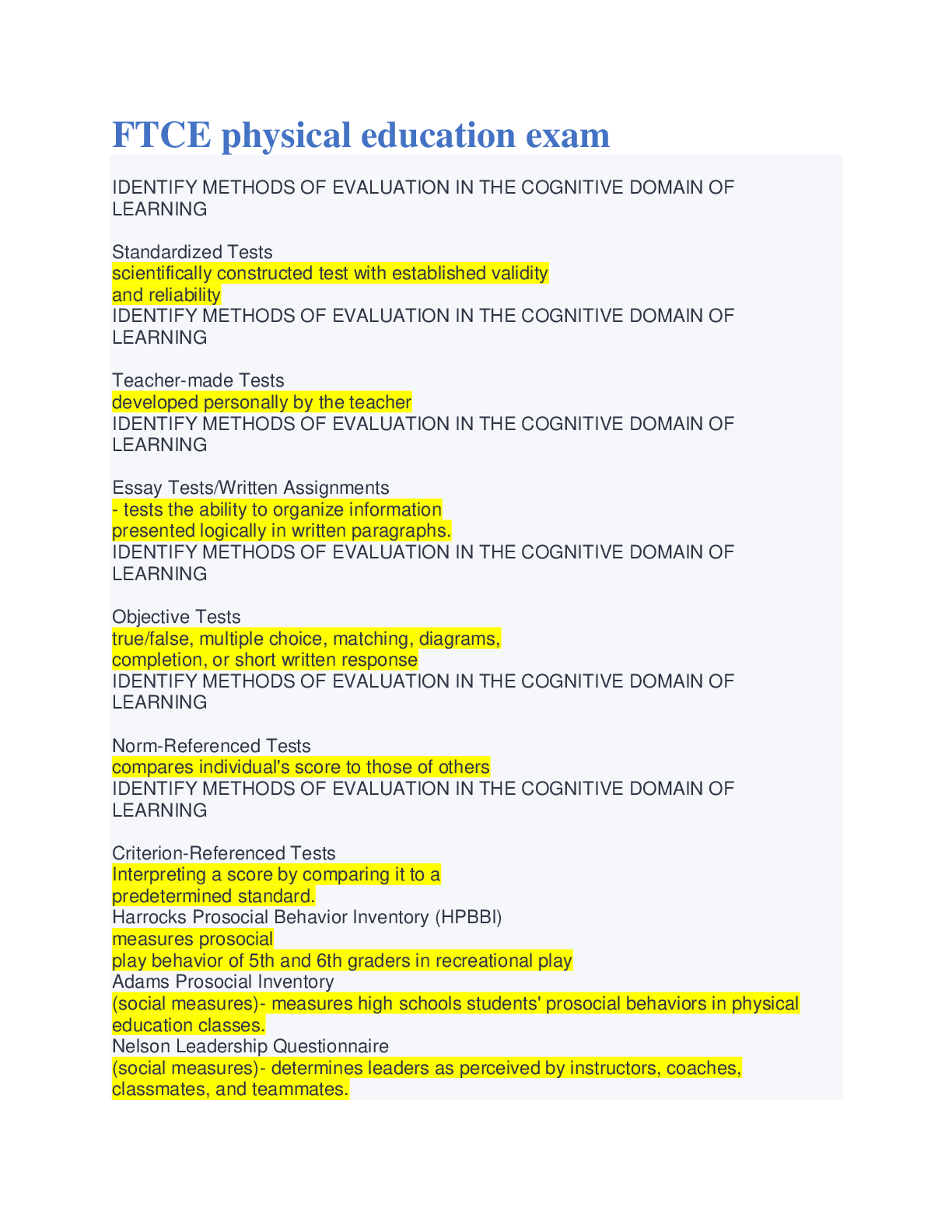Health Care > EXAM > perio - mental dental| 230 questions| graded A| 40 PAGES (All)
perio - mental dental| 230 questions| graded A| 40 PAGES
Document Content and Description Below
what is the 4 things in the periodontium? Correct Answer: alveolar bone PDL cementum gingiva *all things that touch PDL demarcates the free gingiva (not bound) from the attached gingiv... a (bound) Correct Answer: free gingival groove junction between the attached gingiva and the alveolar mucosa (not bound) Correct Answer: mucogingival junction: initiating factor of perio disease Correct Answer: microbial plaque erosion Correct Answer: caused by acidic foods/beverages or gastric acid abrasion: Correct Answer: loss of tooth structure by mechanical wear (tooth-brushing) attrition: Correct Answer: occlusal wear from functional contacts with opposing teeth (bruxism) abfraction: Correct Answer: loss of tooth structure in cervical areas due to tooth flexure (can b byproduct from above) PD measures from where to where CAL measured from where to where Correct Answer: PD - from gingival margin to base of pocket CAL - from CEJ to base of pocket CAL = Correct Answer: PD + recession best measure of inflammation in periodontal tissue? Correct Answer: Bleeding on probing if you have SUPPURATION what cells would you have high # of? Correct Answer: neutrophils MILLER MOBILITY class 0 1 2 3 Correct Answer: 0 - physiologic 1- slightly more than normal 2 - moderately more than normal (≤1mm) 3 >1mm and vertically depressed Furcation factors (inc chance of furc involvement) Correct Answer: short root trunk short root roots are close cervical enamel projection HAMP classification (furcation) 0 1 2 3 Correct Answer: 0 - no furc involve 1 <3mm 2: >3mm 3: thru and thru GLICKMAN. (furcation) 1 2 3 4 Correct Answer: 1 Incipient - into the flute 2 Cul de sac - into the furca 3 through and through 4 through and through that you can see clinically furcation is usually measured with what instrument Correct Answer: nabers probe ( increments of 3mm) NORMAL DISTANCE from CEJ to alveolar crest bone crest should be ____ to line connecting CEJs Correct Answer: 2mm Parallel horozontal bone loss Correct Answer: bone stays parallel to line connecting CEJs Vertical / angular bone loss is classified by Correct Answer: the number of bony walls remaining INFRABONY DEFECTS 1 wall 2 wall 3 wall 4 wall most common? Correct Answer: 1- hemiseptal 2- crater (most common) 3- trough 4- circumferential (ext site) Miller class (recession) 1-4 Correct Answer: 1- recession not to MGJ (no interdental bone loss) 2- recession to MGJ or past (no interdental bone loss) 3- recession to MGJ or past (interprox bone loss) 4- recession to MGJ or past (severe interprox bone lost) what does miller class (recession) determine which ones can be fixed? Correct Answer: likelihood of root coverage 1 100% 2 100% 3 partial 4 none chronic gingivitis leads to? Correct Answer: fibrosis What factors could make plaque indiced gingival disease worse Correct Answer: systemic factors [Show More]
Last updated: 2 years ago
Preview 1 out of 43 pages

Buy this document to get the full access instantly
Instant Download Access after purchase
Buy NowInstant download
We Accept:

Reviews( 0 )
$10.00
Can't find what you want? Try our AI powered Search
Document information
Connected school, study & course
About the document
Uploaded On
Sep 27, 2022
Number of pages
43
Written in
Additional information
This document has been written for:
Uploaded
Sep 27, 2022
Downloads
0
Views
80














